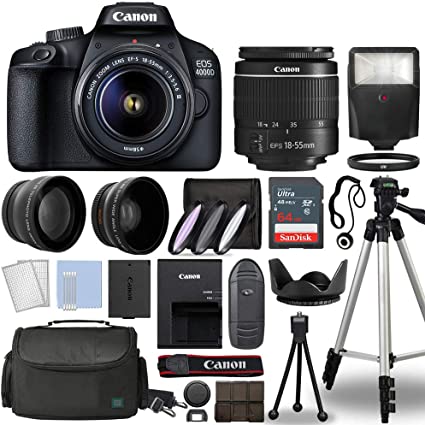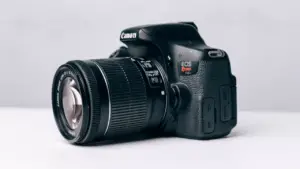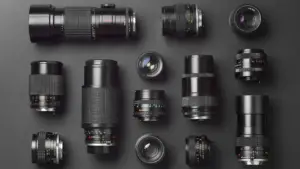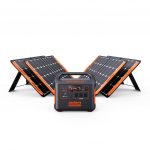A DSLR camera with High Dynamic Range (HDR) capability is a camera that can capture and combine multiple exposures of a scene at different brightness levels to create an image with greater detail in both the bright and dark areas of the image. This technique allows photographers to capture scenes with high-contrast lighting that would be difficult or impossible to capture with a single exposure.
Table of Contents
Benefits of using HDR in photography
The main benefit of using HDR in photography is the ability to capture more detail in high-contrast scenes, such as landscapes with bright skies and dark shadows or indoor scenes with bright windows and dark interiors. HDR images can also be used to create more dramatic and artistic effects and produce more natural-looking images in challenging lighting conditions.
How HDR works in DSLR cameras
DSLR cameras with HDR capability typically have features such as exposure bracketing, which allows you to take multiple shots at different exposure levels, and auto-exposure lock, which allows you to lock in the exposure settings for a particular shot. These features enable you to capture a wider range of brightness levels and produce HDR images rich in detail and color. In addition, DSLR cameras with HDR capability often have advanced post-processing features that allow you to refine further and enhance your HDR images.
Key Features of DSLR Cameras with HDR
Sensor Size and Resolution
The sensor size and resolution of a DSLR camera with HDR capability are important factors to consider when choosing a camera for HDR photography. A larger sensor size and higher resolution can capture more detail and provide better image quality, especially in low-light conditions; This is particularly important when capturing multiple exposures for HDR images.
ISO Sensitivity
ISO sensitivity is another important factor when choosing a DSLR camera with HDR capability. A camera with a higher ISO range can capture more detail in low-light situations and produce better results when combining multiple exposures for HDR images. However, higher ISO settings can also introduce more noise or grain in the image, so finding a balance between ISO sensitivity and image quality is important.
Exposure Bracketing
Exposure bracketing is a feature in many DSLR cameras with HDR capability that allows you to take multiple shots of the same scene at different exposure levels; This is important for capturing a wider range of brightness levels in a scene and producing HDR images. Exposure bracketing can typically be adjusted in terms of the number of shots taken, the exposure increment between each shot, and the sequence of exposures.
RAW Format
Shooting in RAW format is important for HDR photography as it provides greater flexibility and control over the final image. RAW format retains more information and provides more detail in the image, which is particularly useful when combining multiple exposures for HDR images. RAW files also allow for greater flexibility in post-processing and editing.
Image Stabilization
Image stabilization is useful for HDR photography, especially when using longer exposure times to capture multiple exposures. Image stabilization helps to reduce camera shake and produce sharper images, which is particularly important when combining multiple exposures for HDR images.
Auto Exposure Lock
Auto exposure lock is a feature that allows you to lock in the exposure settings for a particular shot; This is useful for HDR photography as it allows you to maintain consistent exposure settings when capturing multiple exposures for an HDR image. Auto exposure lock can typically be activated by pressing a button on the camera or using the camera’s menu system.
Top 10 DSLR Cameras with HDR
Canon DSLR cameras (buy on Amazon)
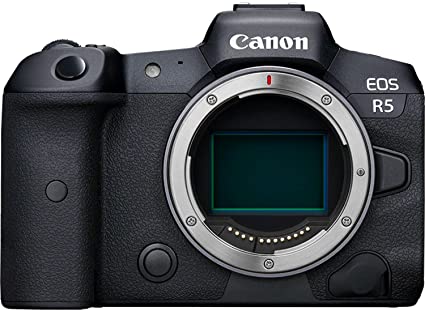
The Canon EOS R5 is a full-frame mirrorless camera with HDR capability. It features a 45-megapixel CMOS sensor and a DIGIC X image processor, providing excellent image quality and fast performance. The EOS R5 also features up to 20 fps continuous shooting and 8K video recording capability. The camera has a sophisticated autofocus system with 5,940 selectable AF points and in-body image stabilization. It includes features such as exposure bracketing, RAW format, and auto-exposure lock, making it an excellent choice for HDR photography. The EOS R5 has a weather-sealed body, a vari-angle touchscreen, and built-in WiFi and Bluetooth connectivity.
Nikon Z7 II (buy on Amazon)
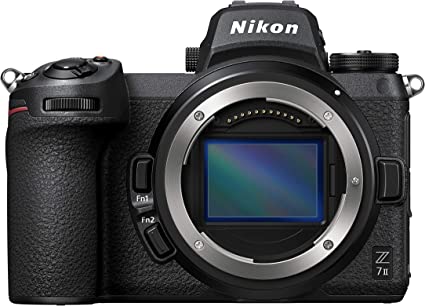
The Nikon Z7 II is a full-frame mirrorless camera with HDR capability. It features a 45.7-megapixel CMOS sensor and dual EXPEED 6 image processors, providing excellent image quality and fast performance. The Z7 II also features up to 10 fps continuous shooting and 4K video recording capability. The camera has a sophisticated autofocus system with 493 AF points and in-body image stabilization. It includes features such as exposure bracketing, RAW format, and auto-exposure lock, making it an excellent choice for HDR photography. The Z7 II has a weather-sealed body, a tilting touchscreen, and built-in WiFi and Bluetooth connectivity.
Sony DSLR cameras (buy on Amazon)
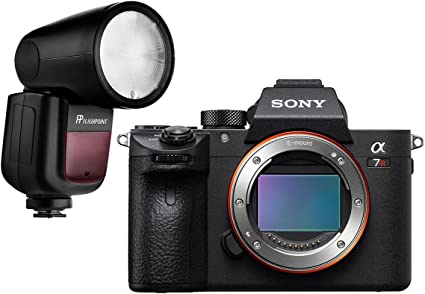
The Sony Alpha a7R IV is a full-frame mirrorless camera with HDR capability. It features a 61-megapixel CMOS sensor and a BIONZ X image processor, providing excellent image quality and fast performance. The a7R IV also features up to 10 fps continuous shooting and 4K video recording capability. The camera has a sophisticated autofocus system with 567 AF points and in-body image stabilization. It includes features such as exposure bracketing, RAW format, and auto-exposure lock, making it an excellent choice for HDR photography. Additionally, the a7R IV has a weather-sealed body, a tilting touchscreen, and built-in WiFi and Bluetooth connectivity.
Fujifilm X-T4 (buy on Amazon)
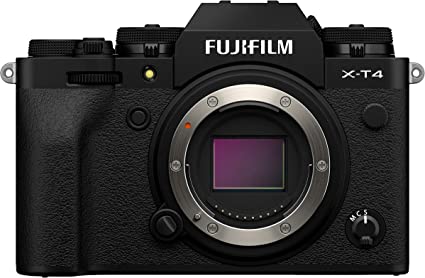
The Fujifilm X-T4 is an APS-C mirrorless camera with HDR capability. It features a 26.1-megapixel X-Trans CMOS 4 sensor and an X-Processor 4 image processor, providing excellent image quality and fast performance. The X-T4 also features up to 15 fps continuous shooting and 4K video recording capability. The camera has a sophisticated autofocus system with 425 AF points and in-body image stabilization; this includes features such as exposure bracketing, RAW format, and auto-exposure lock, making it an excellent choice for HDR photography. Additionally, the X-T4 has a weather-sealed body, a vari-angle touchscreen, and built-in WiFi and Bluetooth connectivity.
Panasonic Lumix S1R (buy on Amazon)
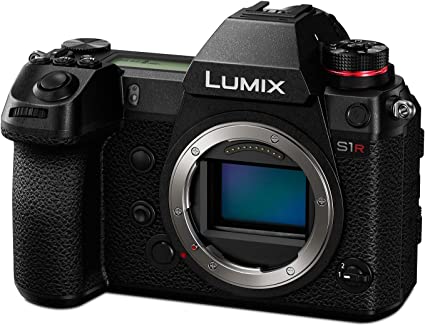
The Panasonic Lumix S1R is a full-frame mirrorless camera with HDR capability. It features a 47.3-megapixel CMOS sensor and a Venus Engine image processor, providing excellent image quality and fast performance. The S1R also features up to 9 fps continuous shooting and 4K video recording capability. The camera has a sophisticated autofocus system with 225 AF points. In-body image stabilization includes exposure bracketing, RAW format, and auto-exposure lock, making it an excellent choice for HDR photography. Additionally, the S1R has a weather-sealed body, a tilting touchscreen, and built-in WiFi and Bluetooth connectivity.
Canon DSLR cameras
The Canon EOS 5D Mark IV is a full-frame DSLR camera with HDR capability. It features a 30.4-megapixel CMOS sensor and a DIGIC 6+ image processor, providing excellent image quality and fast performance. The 5D Mark IV also features up to 7 fps continuous shooting and 4K video recording capability. The camera has a sophisticated autofocus system with 61 AF points, and dual-pixel autofocus includes features such as exposure bracketing, RAW format, and auto-exposure lock, making it an excellent choice for HDR photography. Additionally, the 5D Mark IV has a weather-sealed body, a touchscreen LCD, and built-in WiFi and NFC connectivity.
Nikon DSLR cameras
The Nikon D850 is a full-frame DSLR camera with HDR capability. It features a 45.7-megapixel CMOS sensor and an EXPEED 5 image processor, providing excellent image quality and fast performance. The D850 also features up to 7 fps continuous shooting and 4K video recording capability. The camera has a sophisticated autofocus system with 153 AF points and in-body image stabilization. It includes features such as exposure bracketing, RAW format, and auto-exposure lock, making it an excellent choice for HDR photography. Additionally, the D850 has a weather-sealed body, a tilting touchscreen, and built-in WiFi and Bluetooth connectivity.
Sony Alpha a9 II
The Sony Alpha a9 II is a full-frame mirrorless camera with HDR capability. It features a 24.2-megapixel CMOS sensor and a BIONZ X image processor, providing excellent image quality and fast performance. The a9 II also features up to 20 fps continuous shooting and 4K video recording capability. The camera has a sophisticated autofocus system with 693 AF points and in-body image stabilization; this includes features such as exposure bracketing, RAW format, and auto-exposure lock, making it an excellent choice for HDR photography. Additionally, the a9 II has a weather-sealed body, a tilting touchscreen, and built-in WiFi and Ethernet connectivity.
Pentax DSLR camera (buy on Amazon)
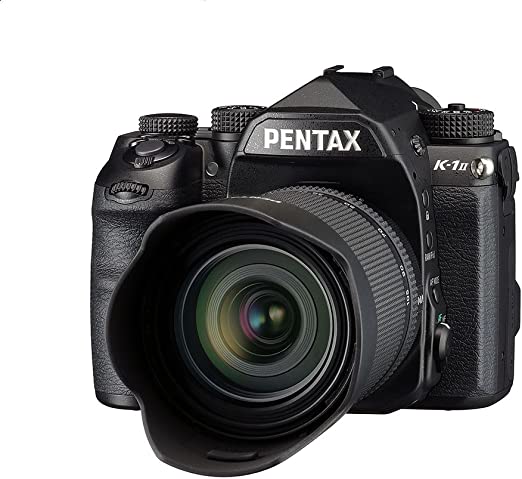
The Pentax K-1 Mark II is a full-frame DSLR camera with HDR capability. It features a 36.4-megapixel CMOS sensor and a PRIME IV image processor, providing excellent image quality and fast performance. The K-1 Mark II also features up to 4.4 fps continuous shooting and 1080p video recording capability. The camera has a sophisticated autofocus system with 33 AF points. In-body image stabilization includes exposure bracketing, RAW format, and auto-exposure lock, making it an excellent choice for HDR photography. Additionally, the K-1 Mark II has a weather-sealed body, a tilting LCD, and built-in WiFi and GPS connectivity.
Canon EOS-1D X Mark III
The Canon EOS-1D X Mark III is a full-frame DSLR camera with HDR capability. It features a 20.1-megapixel CMOS sensor and dual DIGIC X image processors, providing excellent image quality and fast performance. The EOS-1D X Mark III also features up to 16 fps continuous shooting and 4K video recording capability. The camera has a sophisticated autofocus system with 191 AF points and in-body image stabilization. It includes features such as exposure bracketing, RAW format, and auto-exposure lock, making it an excellent choice for HDR photography. The EOS-1D X Mark III also has a weather-sealed body, a touchscreen LCD, and built-in WiFi and Bluetooth connectivity.
Comparison of top DSLR cameras with HDR
Sensor size and resolution
A DSLR camera’s sensor size and resolution are important factors to consider when comparing models. Larger sensors generally offer better low-light performance and improved dynamic range. In comparison, higher-resolution sensors offer more detail in images. The Canon EOS R5, Sony Alpha a7R IV, and Nikon Z7 II all feature high-resolution sensors, while the Fujifilm X-T4 and Sony Alpha a9 II have slightly smaller sensors.
ISO sensitivity
ISO sensitivity refers to the camera’s ability to handle low-light situations. The higher the ISO range, the better the camera can perform in low light. The Sony Alpha a7R IV and Nikon Z7 II have a higher ISO range compared to the other cameras on the list.
Exposure bracketing
Exposure bracketing is important for HDR photography as it allows you to capture a range of exposures that can be combined to create a final HDR image. The Canon EOS R5, Fujifilm X-T4, Sony Alpha a7R IV, and Nikon D850 all offer exposure bracketing capabilities.
RAW format
The RAW format allows for greater control in post-processing as it captures more image data than JPEG. All of the cameras on the list offer RAW format capabilities.
Image stabilization
Image stabilization can help reduce camera shake, resulting in sharper images. The Sony Alpha a7R IV and Sony Alpha a9 II feature in-body image stabilization. At the same time, the Canon EOS R5 and Fujifilm X-T4 have image stabilization built into their lenses.
Auto exposure lock
Auto exposure lock allows you to lock the exposure settings of your camera, which can be helpful when shooting in difficult lighting situations. All of the cameras on the list offer this feature.
Video features
Some DSLR cameras are also capable of shooting high-quality video. The Canon EOS R5, Sony Alpha a7R IV, and Sony Alpha a9 II are known for their excellent video capabilities.
Price
The price of a camera is also an important factor to consider when comparing models. The most expensive cameras are the Canon EOS R5 and Sony Alpha a7R IV. At the same time, the Fujifilm X-T4 and Pentax K-1 Mark II are more affordable options.
Advantages of using DSLR cameras with HDR
Increased dynamic range
Dynamic range refers to the range of brightness values in an image, from the darkest shadows to the brightest highlights. DSLR cameras with HDR capability can capture a wider range of brightness levels than non-HDR cameras; This means that HDR images can capture more detail in both the shadow and highlight areas of the image, resulting in a more balanced exposure.
For example, without HDR, a landscape photo taken during a sunset may have a properly exposed sky but dark shadows in the foreground. With HDR, the camera takes multiple images at different exposures, then combines them to create a wider dynamic range that shows the bright sky and the shadowed foreground with more detail.
Improved image quality
The increased dynamic range in HDR photography can also improve image quality. With more detail captured in the shadows and highlights, the resulting images are more detailed and have a higher level of contrast; This can lead to more pleasing and natural-looking images.
Additionally, HDR photography can result in more accurate colors and reduced noise in the final image. By combining multiple exposures, the camera can reduce the noise in the image and create a cleaner, sharper final product.
Better low-light performance
DSLR cameras with HDR capability often have superior low-light performance compared to non-HDR cameras because HDR allows for more detail in darker areas of the image, resulting in less noise and a cleaner image overall.
In low-light conditions, non-HDR cameras may struggle to capture enough detail in the shadow areas of the image, resulting in noisy or blurry images. HDR photography can help alleviate this issue by capturing multiple exposures at different brightness levels, then combining them to create a cleaner, more detailed final image.
Greater control over exposure
HDR photography also gives photographers greater control over exposure. With the ability to capture a wider range of brightness levels, photographers can choose to expose the highlights, shadows, or mid-tones, depending on the desired effect.
For instance, if a photographer wants to capture a sunset with a dramatic orange sky, they can expose the sky and let the foreground darker. Alternatively, they want to capture detail in the foreground and the sky. In that case, they can use HDR to combine multiple exposures and create a well-exposed final image.
Enhanced post-processing capabilities
HDR photography also offers enhanced post-processing capabilities. Since HDR images capture more detail and have a wider dynamic range, photographers have more flexibility when editing the image.
For example, suppose an HDR image has an overexposed sky. In that case, the photographer can use post-processing software to reduce the exposure in the highlights while preserving detail in the shadow areas. Additionally, HDR images can be processed in black and white or with various color effects to create unique and creative final images.
Tips for Shooting HDR Photos with DSLR Cameras
Choosing the right scene
To get the best results from HDR photography, it’s important to choose the right scene. Scenes with a wide range of brightness levels, such as sunsets or landscapes with bright skies and dark foregrounds, are ideal for HDR. It’s also important to choose a relatively still scene, as movement can cause issues during the multiple exposures required for HDR.
Adjusting the exposure settings
When shooting HDR, it’s important to adjust the exposure settings to capture a range of brightness levels. Start by setting the camera to aperture priority mode, then adjust the exposure compensation until the image looks properly exposed. You can adjust the ISO and shutter speed to fine-tune the exposure further.
Bracketing techniques
Bracketing is a technique where the camera takes multiple shots at different exposures, combined in post-production, to create the final HDR image. You can use several bracketing techniques, such as exposure bracketing or white balance bracketing, depending on the scene and your desired effect.
Exposure bracketing involves taking multiple shots at different exposures, typically three or five shots at +/- 1 or 2 stops. White balance bracketing involves taking shots with different white balance settings, which can be useful for scenes with mixed lighting.
Using a tripod
Since HDR photography involves taking multiple shots at different exposures, keeping the camera still is important to avoid any misalignment between shots. Using a tripod can help keep the camera stable and ensure that each shot lines up properly.
Processing the images in post-production
After capturing the shots for your HDR image, it’s important to process them properly in post-production. Several software programs are available for combining the shots into a single HDR image, such as Adobe Photoshop or Photomatix.
During post-production, it’s important to adjust the tone mapping and exposure settings to get the desired effect. Be careful not to overdo it, as overly processed HDR images can look artificial and lose the natural look of the scene.
Conclusion
When choosing the best DSLR camera with HDR for your needs, it’s important to consider factors such as sensor size and resolution, ISO sensitivity, exposure bracketing, RAW format capabilities, image stabilization, auto exposure lock, video features, and price.
The Canon EOS R5, Nikon Z7 II, and Sony Alpha a7R IV are all excellent options for high-resolution sensors and great low-light performance. The Fujifilm X-T4 and Sony Alpha a9 II offer slightly smaller sensors but deliver excellent image quality and performance.
Those looking for exposure bracketing capabilities should consider the Canon EOS R5, Fujifilm X-T4, Sony Alpha a7R IV, and Nikon D850. At the same time, those who prioritize image stabilization may prefer the Sony Alpha a7R IV or Sony Alpha a9 II.
Ultimately, the best DSLR camera with HDR for your needs will depend on your specific photography needs and budget. It’s important to consider each camera’s features and capabilities carefully before purchasing.

